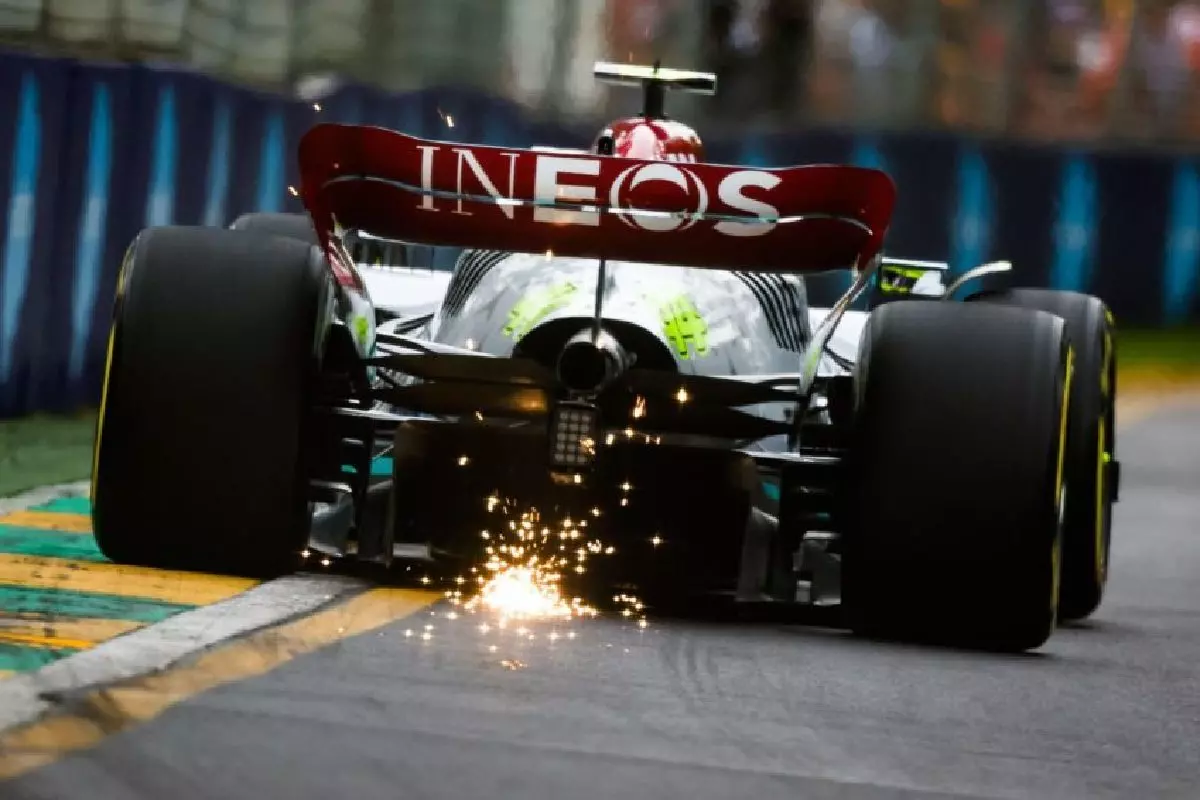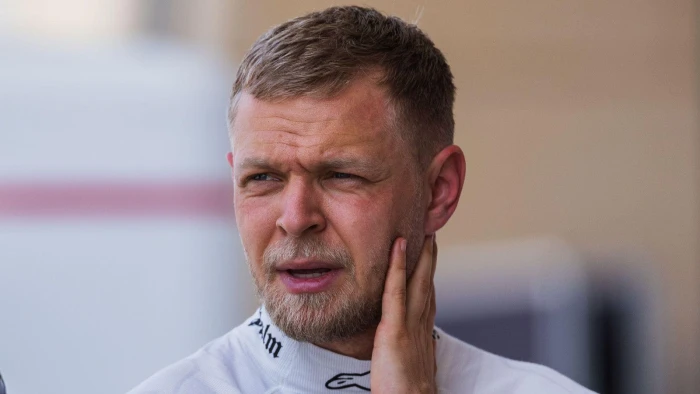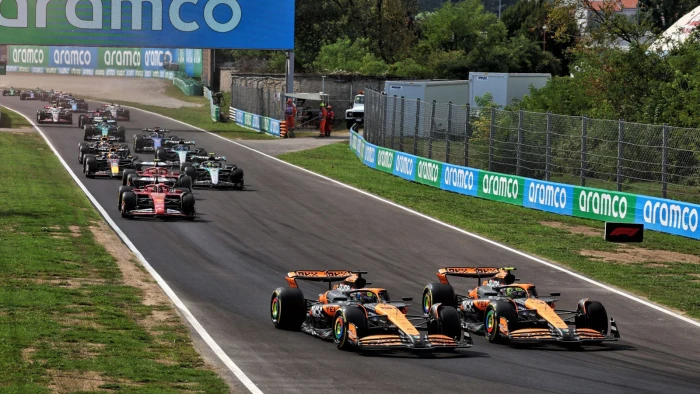Porpoising in F1: What is it and how harmful is it to driver health?

Mercedes Lewis Hamilton Austrian GP
Formula 1's new generation of ground effect aerodynamic cars have brought with them a new, at least for today's grid, phenomenon that has caught many of the teams out, some more than others.
It's called porpoising, a bouncing motion that is not only horrendously uncomfortable for the drivers but also bad for their health.
It's also costly for the teams as they have to change the car's set-up to minimise it, which means raising the ride-height, robbing them of downforce, pace and ultimately, points.
The FIA has stepped in to minimise porpoising, but it remains to be seen whether they can eradicate it completely.
What is porpoising?
Porpoising, otherwise known as bouncing, is the motion today's generation of Formula 1 cars make when their under-floor aero stalls and the car is pushed away from the ground.
Like a dolphin or porpoise moving through the water, up and down along the length of their body, so too do the Formula 1 cars.
But unlike with the dolphins, it is not pleasant to watch and even worse to experience.
How do you fix porpoising?! ? pic.twitter.com/CYZkTMdZWp
— Sky Sports F1 (@SkySportsF1) June 13, 2022
The problem was first discovered back in the late 1970s when Colin Chapman was the first team boss to trial ground effect aerodynamics with his Lotus F1 cars.
Winning the World title with Mario Andretti in the Lotus 79, more teams swapped to using the pull, not push effect for downforce.
However, it was banned in 1982, Formula 1 chiefs fearing it was too dangerous as it made the cars unstable and extremely difficult to drive.
This year, in a bid to make simpler cars with fewer bits-and-bobs and more standardised wing pieces, Formula 1 returned to ground effect aerodynamics as it is also known for creating a cleaner wake off the cars thus making it easier for those behind to follow.
But while that seems to have done the trick, the teams - most notably and vocally Mercedes - have found the bouncing to be a bit too much.
As Toto Wolff put it earlier this season, Mercedes are "specialists in bouncing", so much so they can divide it into "porpoising or bouncing or bottoming".
Why has porpoising returned to Formula 1?
Porpoising is back in Formula 1 because, quite simply, it is a consequence of using ground effect aerodynamics to create a car's downforce.
While Formula 1's previous generation of cars used over-air flow for that, this year's cars use the floor as the source of the downforce so instead of the car being pushed down, it is pulled down.
Venturi ducts in the floors of the cars change the airflow underneath. By creating a low-pressure area, the air speed increases which means more downforce and a faster car. And the faster the car, the more downforce it then creates.
Porpoising occurs when the suction pulls the car so close to the ground that the under-floor aero stalls.
When that happens, the car raises away from the ground and, as it gets higher, the aero kicks back in, again pulling the car towards the ground.
As the action and reaction continues, the car goes up and down in a porpoising motion.
What are the effects of porpoising on driver health?
Earlier this season it was clear already that porpoising had an impact on the cars, Lance Stroll revealing that Aston Martin had broken several floors while Mick Schumacher says a leak just two laps into a practice session was the result of bouncing.
But while the physical impact on the cars is visible, the impact on the drivers' bodies is hidden.
With the cars hitting the ground hard, not helped by stiffer suspensions being in play this season, that impact is travelling through the driver's body.
George Russell was the first to complain, not surprising given that Mercedes suffer from extreme bouncing, revealing after Imola that his neck and back were sore.
His team-mate Lewis Hamilton added his voice after Baku, the seven-time World Champion helped from his car before he walked away clutching at his back.
With Mercedes the most vocal in their concerns, Red Bull team boss Christian Horner says if his RB18 bounced like Mercedes' did, he'd also tell his drivers to "bitch" as loud as possible in order to put pressure on the rule-makers to make changes.
However, the Mercedes drivers weren't alone in their comments.
Carlos Sainz said after Miami that he had "done checks on my back and neck tightness and this year it is tighter everywhere, I am already feeling it" while Pierre Gasly voiced his fears that he would need a "cane at 30 years old" if this continued.
And, not to minimise back and neck pain, there is another issue at hand and that is micro-concussions - if the body is bouncing, so too is the brain.
Hamilton was asked about this, saying he has "definitely been having a lot more headaches in the past couple of months. But I have not seen a specialist about it so I have not taken it too seriously, I have just taken painkillers. So hopefully I don't have any concussions."
What are the FIA and Formula 1 doing to address porpoising?
Following a back-breaking Azerbaijan Grand Prix, a race in which every driver except Fernando Alonso was said to have complained about porpoising, the FIA made the call to intervene "in the interest of safety" - the drivers' safety.
A Technical Directive was issued, laying out two measures that the FIA would be taking:
Porpoising/bouncing comparison pic.twitter.com/vPdcdGKO1V
— F1 To Rule Them All (@F1RulesMedia) June 16, 2022
The teams, especially Red Bull, baulked at the idea and argued that it should be up to each individual team to resolve their own porpoising problems. Horner went as far as to say that if the race stewards felt that a car was unsafe then they should show it the black-and-white flag.
Mercedes, despite being the team likely to feel the biggest negative impact of the FIA's measures, applauded motorsport's governing body for getting involved, as did several drivers.
But what exactly does that TD mean? That has yet to be set out in stone.
Following a recent F1 Technical Advisory Committee meeting, the FIA announced that the porpoising measures would be in place at the French Grand Prix as a trial, and would then come into effect in Belgium as a rule.
This would give the teams time to possibly find a solution of their own should their cars be found to exceed the Aerodynamic Oscillation Metric (AOM) that the FIA will declare.
It has been suggested that any car that exceeds the AOM will have to raise its ride-height by 10mm, giving the driver more ground clearance and protection but costing him downforce.
The FIA, though, acknowledged that this is not a long-term solution especially as next season, the second year under the new rules, they expect the teams to find more downforce as they always do year on year.
As such for 2023, the FIA has proposed a few tweaks to the rules that include raising the floor edges by 25mm as well as the underfloor diffuser throat. There will also be more stringent lateral floor deflection tests and a new sensor to quantify aero oscillation.
As the FIA put it, it is their "responsibility and prerogative to intervene for safety matters" and they can and will do this "without being influenced by the competitive position each team may find themselves in".



